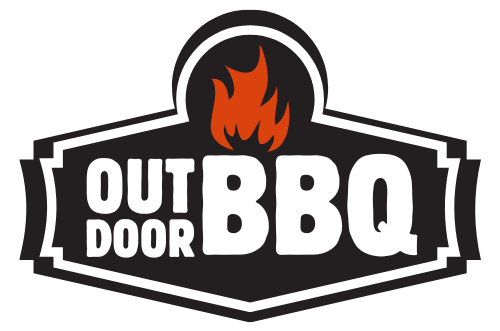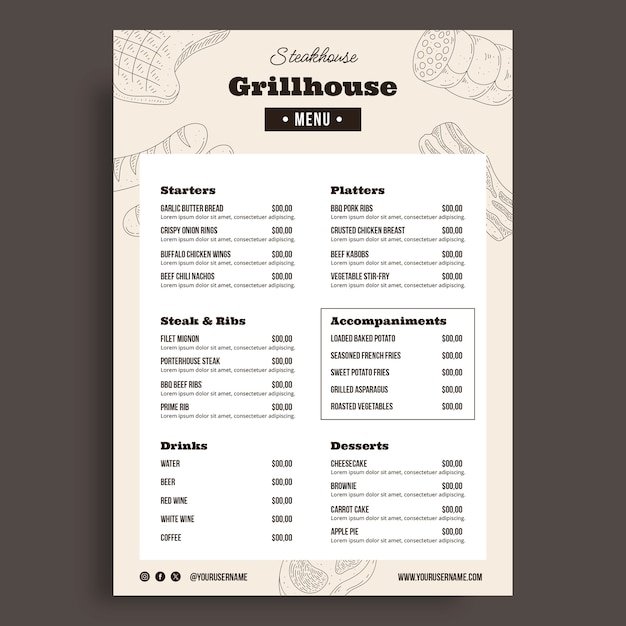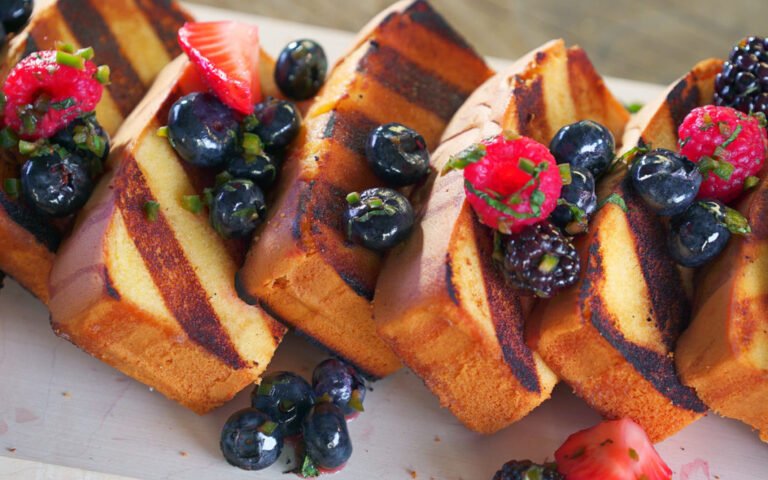Grilling is a beloved pastime and a favorite cooking method for many. Whether it’s a family gathering or a casual backyard barbecue, the aroma of grilled food is irresistible.
But grilling can be tricky, and mistakes are common, even among seasoned grill masters. As we fire up our grills, aiming for that perfect char and mouthwatering flavor, it’s easy to overlook the small missteps that can lead to less-than-stellar results.
From choosing the right cuts of meat to mastering the heat, grilling is an art. But fear not, even if your English is not perfect or grilling skills are a work in progress, this guide is here to help. We’ll highlight common errors to watch out for, ensuring your next barbecue is a sizzling success. Say goodbye to burnt offerings and hello to juicy, flavorful delights. Get ready to grill with confidence and enjoy every bite!

The Pitfalls Of Overcrowding The Grill
Welcome to the grill zone! A common grill mistake is overcrowding. Let’s explore why giving your food ample space matters. Keep your grilling experience top-notch by avoiding this pitfall.
Space Matters: Why Less Is More
Think of your grill as a dance floor. Like dancers, foods need room to move. Cramming them together causes uneven cooking. Give each piece its space. This way, you ensure each gets the heat it deserves. Your meats and veggies will thank you with perfect char and flavor.
Heat Distribution And Cooking Times
A crowded grill struggles with heat. Foods cook unevenly, some burn, others undercook. Space allows heat to flow freely. It ensures consistent cooking times. Remember, a less crowded grill means better heat control and tastier results.
Choosing The Wrong Type Of Heat
Grilling is an art. Choosing the right type of heat is crucial. The wrong heat can ruin good food. Let’s avoid common mistakes.
Direct Vs. Indirect Heat Techniques
Grills use direct or indirect heat. Direct heat cooks food fast. It’s right over the flame. Indirect heat cooks slow. The flame is not directly under the food. Use direct heat for burgers and steaks. Use indirect heat for large meats like chicken or pork.
- Direct heat is quick and hot.
- Indirect heat is slow and even.
Matching Heat Levels To Different Foods
Different foods need different heat levels. Thin cuts need high heat. They cook fast. Thick cuts need low heat. They cook slow. Vegetables need medium heat. Keep this in mind:
| Food Type | Heat Level |
|---|---|
| Thin cuts (steak, fish) | High |
| Thick cuts (chicken, pork) | Low |
| Vegetables | Medium |
Remember, the right heat makes perfect grilling. Avoid the wrong heat. Enjoy your grilling!
Neglecting The Preheat Phase
Neglecting the preheat phase is a common grilling mistake. Many grillers rush to cook without preheating. This can lead to unevenly cooked food. The grill needs time to reach the right temperature. Let’s dive into why this step is crucial.
The Importance Of Temperature Control
Controlling temperature is key for perfect grilling. It affects flavor and safety. A hot grill sears meats well. It creates a tasty crust. Cold spots on a grill can mean raw meat. This is risky. Always aim for a consistent heat before cooking.
How To Test Readiness Without Gadgets
You can test your grill’s heat without tools. Hold your hand above the grill. Count the seconds you can keep it there. Five seconds means low heat. Four seconds are for medium heat. Two seconds suggest high heat. This simple method helps ensure your grill is ready.
Frequent Flipping Faux Pas
Grilling can be tricky, and common blunders often lead to less than perfect meals. Steer clear of these top mistakes to ensure your barbecue is a hit. Avoiding frequent flipping can make a big difference in your grilling success.
Grilling masters and novices, listen up! One of the biggest mistakes is frequent flipping. It can ruin a perfect barbecue. Let’s dive into why less is more when turning meats on the grill.Letting Meat Develop A Crust
First, understand the magic of the crust. This flavorful layer is key to a juicy steak. Give your meat time on the grill. Don’t flip it too soon. The crust forms over a few minutes. It seals in those tasty juices. Wait for it. You’ll know it’s time when the meat lifts easily off the grill. A good crust equals great flavor.
Resisting The Urge To Poke And Prod
Next, let’s talk about poking and prodding. You might want to check the meat. But don’t. Poking holes lets juices escape. Those juices keep your meat tender. Keep the lid closed too. Each peek lets heat out. Your grill needs that heat to cook the meat. Trust the process. Let the grill do its job. You’ll end up with better results.
Remember, patience at the grill pays off. Less flipping, no poking, and wait for the crust. Stick to these tips for your best barbecue yet.Saucing At The Start Instead Of The Finish
Grilling pros often sauce meats at the end, but a common mistake is doing it too early. This can cause the sauce to burn and spoil the flavor.
Grilling is an art. One common mistake? Saucing meat too early. Let’s dive into why timing matters and how to avoid common pitfalls.Timing Your Bastes And Glazes
Sauce too soon, and you risk a burnt coat. Why? Most sauces contain sugar. Sugar burns fast under heat. The trick is waiting. Wait until the last few minutes. That’s the sweet spot. Your meat gets a tasty glaze. Not a burnt crust.Avoiding Burnt Outsides And Raw Insides
Ever had chicken that’s charred outside but raw inside? It’s a common issue. Starting with sauce can cause this. The outside cooks too fast. The inside? Not enough. By saucing late, heat spreads evenly. Meat cooks inside out. Perfectly grilled every time. Remember, patience is key. Sauce at the end, not the start.
Forgetting The Resting Period Post-grill
Imagine pulling a steak off the grill too soon. It’s a common grilling mistake. Many forget to let their meat rest after grilling. Let’s talk about why this rest time is key to a perfect meal.
Why Meat Needs To Rest
Think of meat on a grill as a sponge full of juice. The heat makes juices flow to the center. Take it off the grill, and juices need time to spread out again. This makes every bite juicy and tender. Rush it, and you’ll lose those precious juices.
Carving: Timing Is Everything
When to slice is crucial. Slice too soon, and juices escape, leaving meat dry. Wait just right, and you get moist, flavorful slices. Aim for 5-10 minutes for steaks, 10-20 for roasts. Use this time to prep sides or set the table. Patience pays off with the perfect meal.
Misusing Marinades And Rubs
Grill masters often face a common challenge: mastering marinades and rubs. These flavor-enhancers can transform meats and veggies. Yet, misuse leads to lackluster results. Below, we tackle common marinade myths and offer tips on applying rubs correctly. Read on to elevate your grilling game.
Marinade Myths Debunked
Marinades are not always the answer. Many believe longer is better. This is not true. Over-marinating can ruin textures. Aim for the sweet spot in timing.
- Avoid acidic marinades for long periods. They can make meats tough.
- Use oil-based marinades to keep moisture in.
- Remember, delicate proteins need less time. Seafood is a quick one.
Applying Rubs The Right Way
Rubs add texture and flavor. But there’s a method to it. Here’s how to apply rubs:
- Pat your meat dry before adding a rub. Moisture helps it stick.
- Don’t be shy. Cover all sides for full flavor.
- Allow time for the rub to set. Thirty minutes works well.
Remember, with rubs, balance is key. Too much can overpower. Just right can make your dish sing.

Lack Of Maintenance: A Recipe For Disaster
Grills need love too. Not caring for your grill can lead to big problems. Dirty grills work poorly and can even be dangerous. Let’s talk about keeping your grill in top shape.
Regular Cleaning For Optimal Performance
After each use, clean your grill. This means brushing the grates and emptying the grease trap. A clean grill cooks better. It also stays safe from fires.
Inspecting For Wear And Tear
Look at your grill often. Check for rust or damage. Small problems can grow. Fixing issues early keeps your grill safe and working well.
Frequently Asked Questions
What Are Common Grilling Temperature Mistakes?
Overcooking or undercooking due to incorrect temperature control is a common grilling mistake. It’s vital to use a meat thermometer and follow recommended guidelines for internal temperatures to ensure perfectly grilled dishes every time.
How To Prevent Food From Sticking To The Grill?
To prevent food from sticking, ensure the grill is hot before you start cooking. Brushing a light coat of oil on the grill grates or on the food itself can also help. Clean the grates after each use to maintain a non-stick surface.
Why Is Marinating Meat Important For Grilling?
Marinating meat adds flavor and tenderizes it, resulting in better taste and texture. It’s particularly useful for tougher cuts. A good marinade includes acids like vinegar or lemon juice, which help in breaking down proteins, enhancing the grilling experience.
Can Grilling Meat Too Often Cause Health Issues?
Grilling meat at high temperatures can lead to the formation of harmful compounds like HCAs and PAHs. Consuming these frequently may increase cancer risk. It’s important to grill at moderate temperatures and avoid charring the meat to minimize health risks.
Conclusion
Mastering the grill takes practice, and mistakes are part of the journey. Keep your grilling skills sharp by remembering these common slip-ups. Always preheat, avoid frequent flipping, and watch those temperatures. Use the right tools and keep it simple. Perfect grilling is all about attention to detail.
So next time, grill with confidence. Good food and great memories await!






